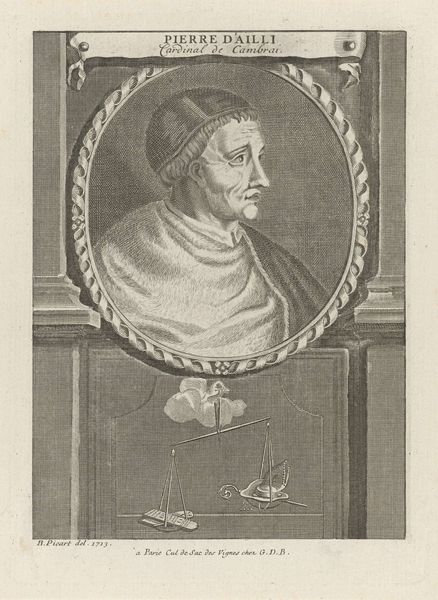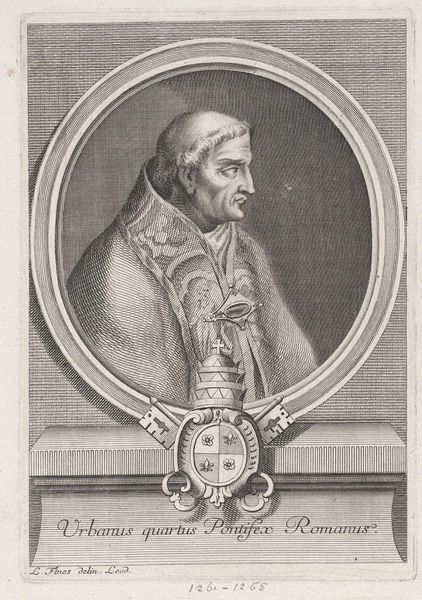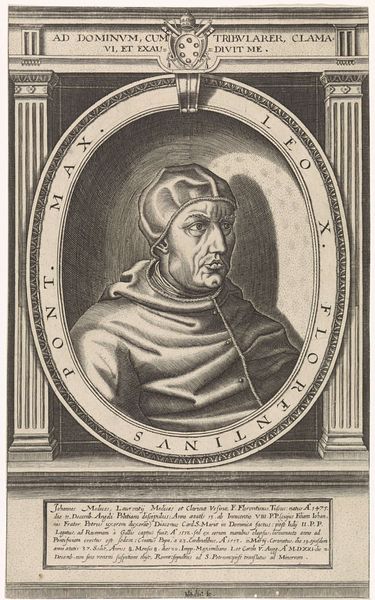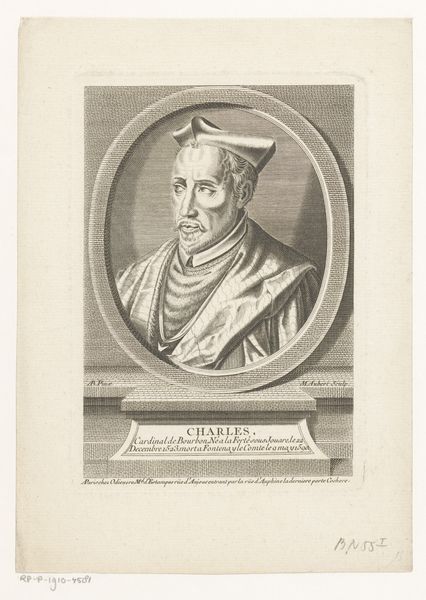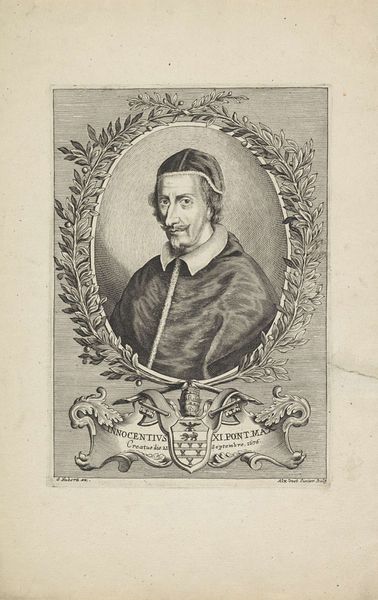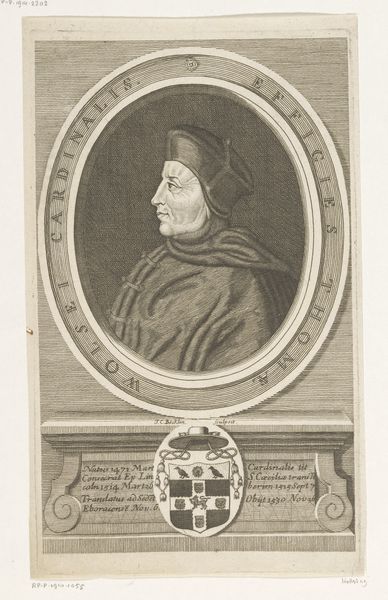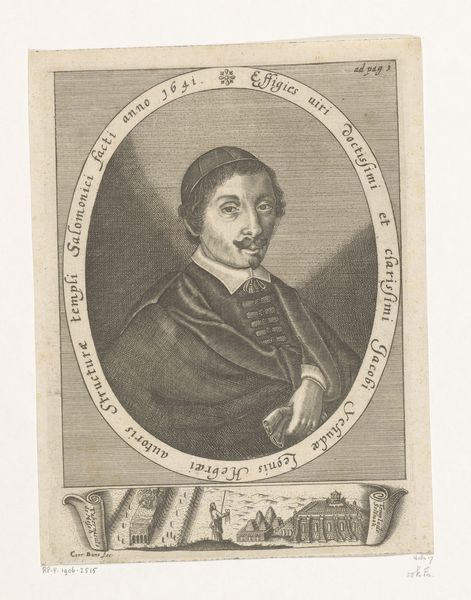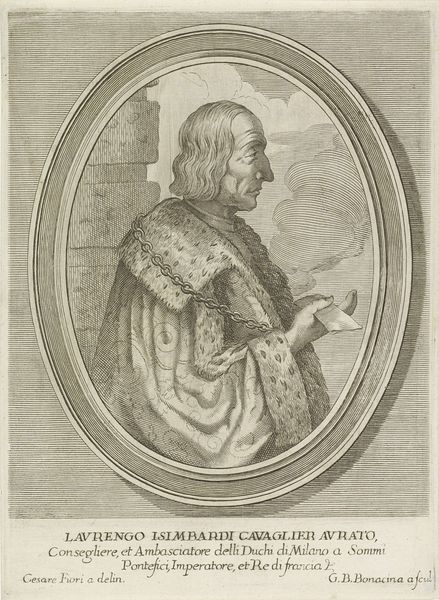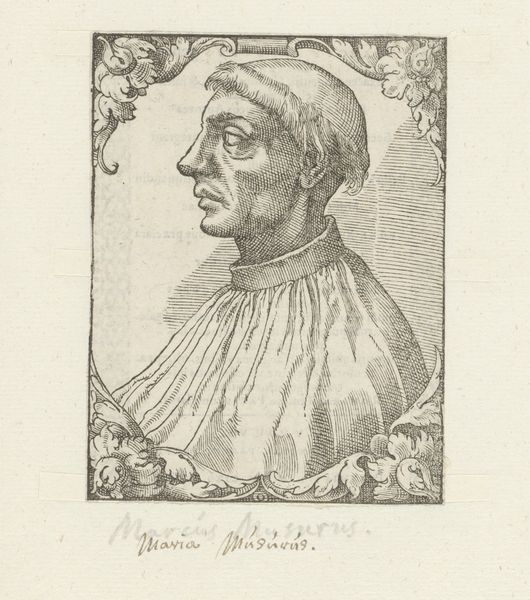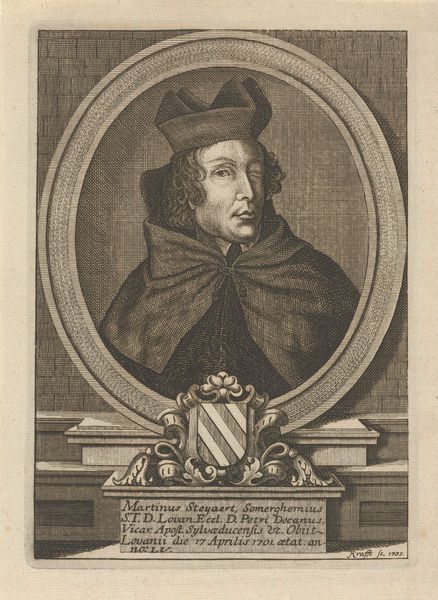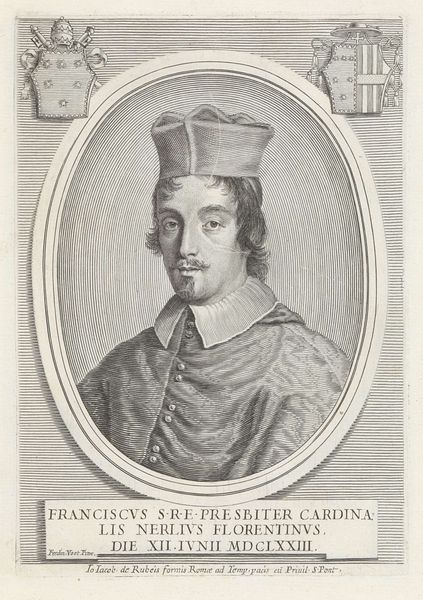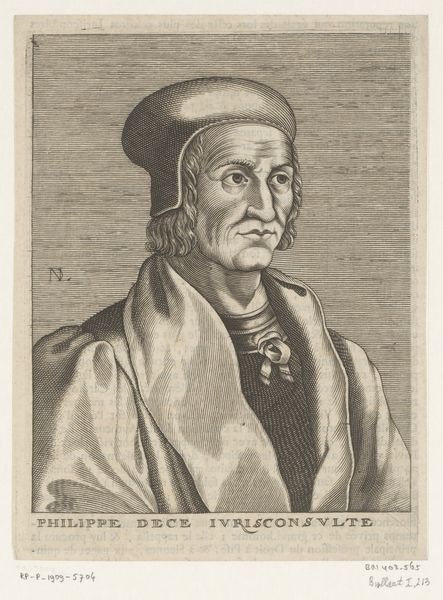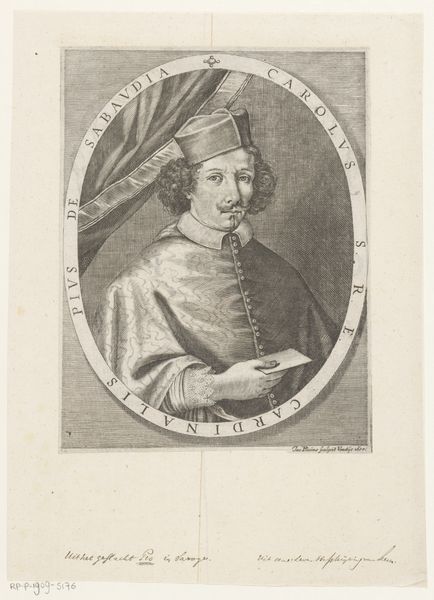
print, engraving
#
portrait
#
baroque
# print
#
old engraving style
#
caricature
#
line
#
portrait drawing
#
engraving
Dimensions: height 205 mm, width 145 mm
Copyright: Rijks Museum: Open Domain
Editor: This is Bernard Picart’s "Portret van Pierre d'Ailly," an engraving from 1713, housed here at the Rijksmuseum. It's incredibly detailed. I am drawn to the serene expression, but there's also something quite severe about the visual language overall. How would you interpret this portrait, beyond just its aesthetic qualities? Curator: This image resonates deeply with symbolism. Look at the scales beneath Pierre d’Ailly’s portrait. Scales, of course, represent justice and balance, but also evoke the weight of decision-making and moral judgment. Do you see how they interact with his status as Cardinal? Editor: Yes, that’s a sharp contrast with his position. It makes you consider if those scales represent what was expected of him. What’s the significance of having it placed beneath the portrait, almost as a foundation? Curator: It's not merely decorative. It suggests that his identity and legacy are fundamentally linked to these principles. His gaze directed away suggests an internal reflection. Consider the power dynamics inherent in religious authority at the time. What unspoken expectations do you think surrounded this man? Editor: So the print isn’t simply a likeness, it’s designed to convey his role and moral landscape, or perhaps, question them. It’s much more complex than I initially realized! Curator: Precisely! Every element works together to shape our understanding and invite reflection on a figure from the past, and the permanence of morality across time. Symbols act as visual bridges connecting us to their world. Editor: This really gives me a new appreciation for how symbols create layers of meaning within the work and extend far beyond just the visual. Thanks so much.
Comments
No comments
Be the first to comment and join the conversation on the ultimate creative platform.
